Bid Lifecycle
The Bid Lifecycle is designed to help you win more business, guiding you step-by-step through the complex process of bidding and submitting proposals. It has three intrinsically linked phases - the Capture Phase, the Bid and Pursuit Phase, and the Proposal Phase.

Bid Lifecycle Explained
All three phases of the Bid Lifecycle are designed to challenge the status quo, sharpen your win strategy, and motivate all those involved to perform at the very highest level. The Capture Phase deals with influencing your client’s requirements and positioning your solution at the very earliest opportunity. The Proposal phase deals with the challenges of developing a professional, high-scoring written response whilst the Bid and Pursuit phase takes a broader look at the pre- and post-proposal activities that you must closely manage to get in to a winning position. Watch the video to learn more.
Take the Bid Lifecycle Challenge 



Take the Bid Lifecycle Challenge now by selecting your current stage of bid activity: answer ‘no’ to any of the questions posed and you risk compromising your chances of winning. We provide focused contractors, consulting, coaching and training at each stage of the Bid Lifecycle and can rapidly improve your chances of winning.



Whilst the Bid Lifecycle is built on the premise that winning new business is cyclical, most sales processes start with the identification of a customer requirement.
In our experience, many salespeople first hear of a customer requirement when an RFP lands on their desk. RFP is stage eleven in our process, so if this is when you typically engage, you are already very much on the back foot.
Do you really know what is driving your customers’ requirements or are you simply responding to a list of discrete questions, shoehorning your solution into their response template? Are you constantly offering cake when your client simply wants an apple? Can you genuinely answer the ‘who, what, when, where, why, and how’ of their needs?
Does your bid process start at this stage or later down the line? Are you much more proactive and start at the end of the previous procurement cycle? Is this a recognised stage or gate in your bid process?
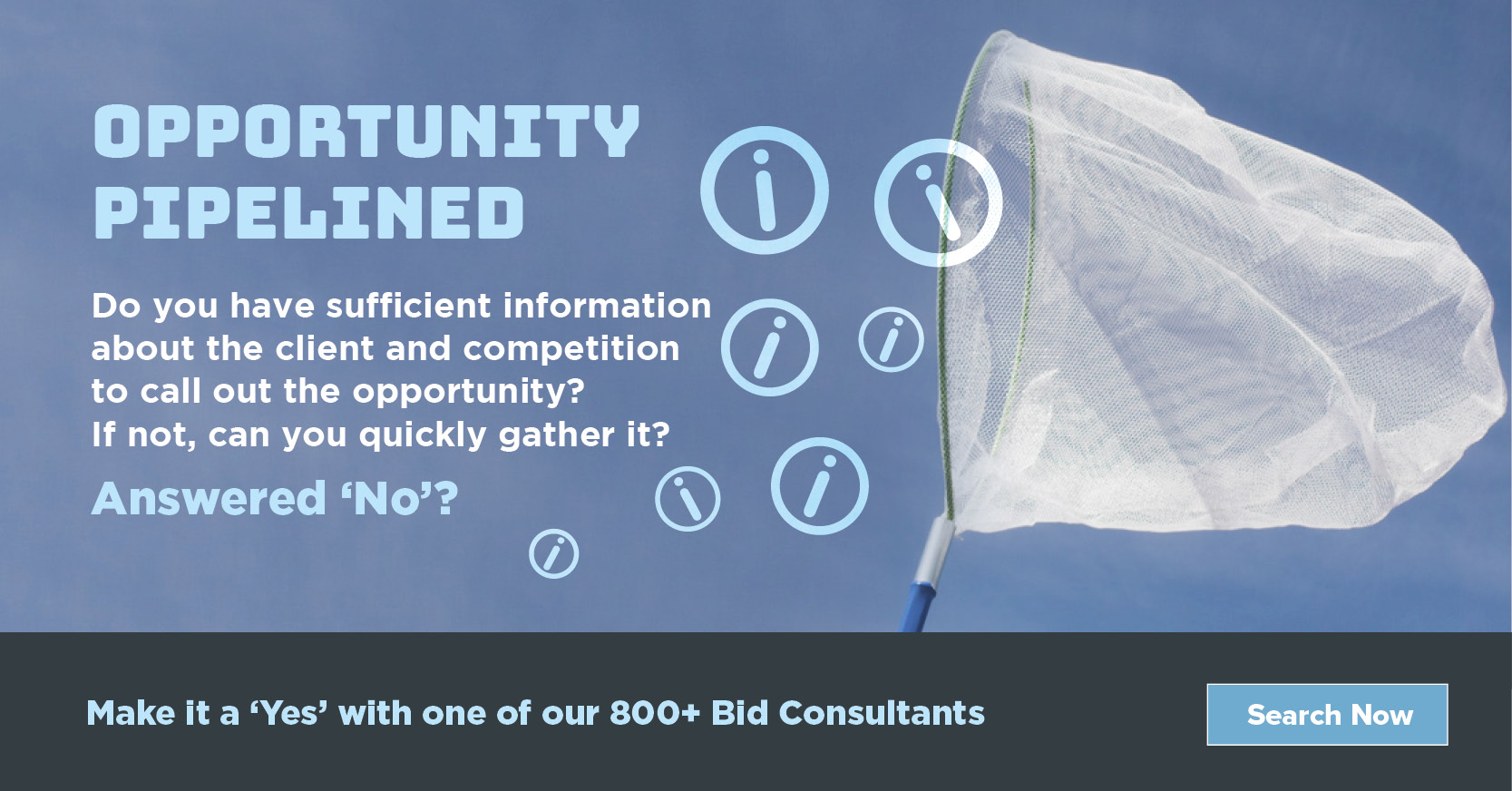
How robust is your bid pipeline? Do you have visibility of the ‘must-win’ deals for next 6 months and beyond? Do your sales team have to formally ‘call out’ an opportunity before you support it? Or, is your pipeline of deals quite literally the bids and proposals you are submitting in the next few weeks?
In our experience, top performing bid teams know what deals are coming down the pipeline many months ahead and allocate resources appropriately. They frequently use the pipeline as a tool for justifying headcount growth within the bid team, whether it’s a permanent hire or contract support for one specific deal. They will also use the pipeline to help sales teams gather the necessary intelligence on the anticipated competition, capturing as much detail as possible for use later in the cycle.

When we talk to clients about the importance of solution development early in the Bid Lifecycle, we often receive a dismissive glare that shouts (quietly) that it’s simply not possible to develop a solution without a detailed set of requirements.
In any sales process there is a huge amount of ambiguity right up until the point of contract signature, and often beyond into due diligence and transition. We believe clients that get to grips with this ambiguity early in the cycle are much more likely to influence the client’s requirements and, in many cases, write or heavily influence the RFP.
Do you start mapping out the solution at this stage, testing your assumptions with the client? If you do, you can put yourself in the driving seat very early in the procurement process.
If the client isn’t willing to enter constructive dialogue with you at this stage, you may need to question their motives. They may have good reason, but they may just be coming to market as a cost saving exercise, rather than to drive significant change.
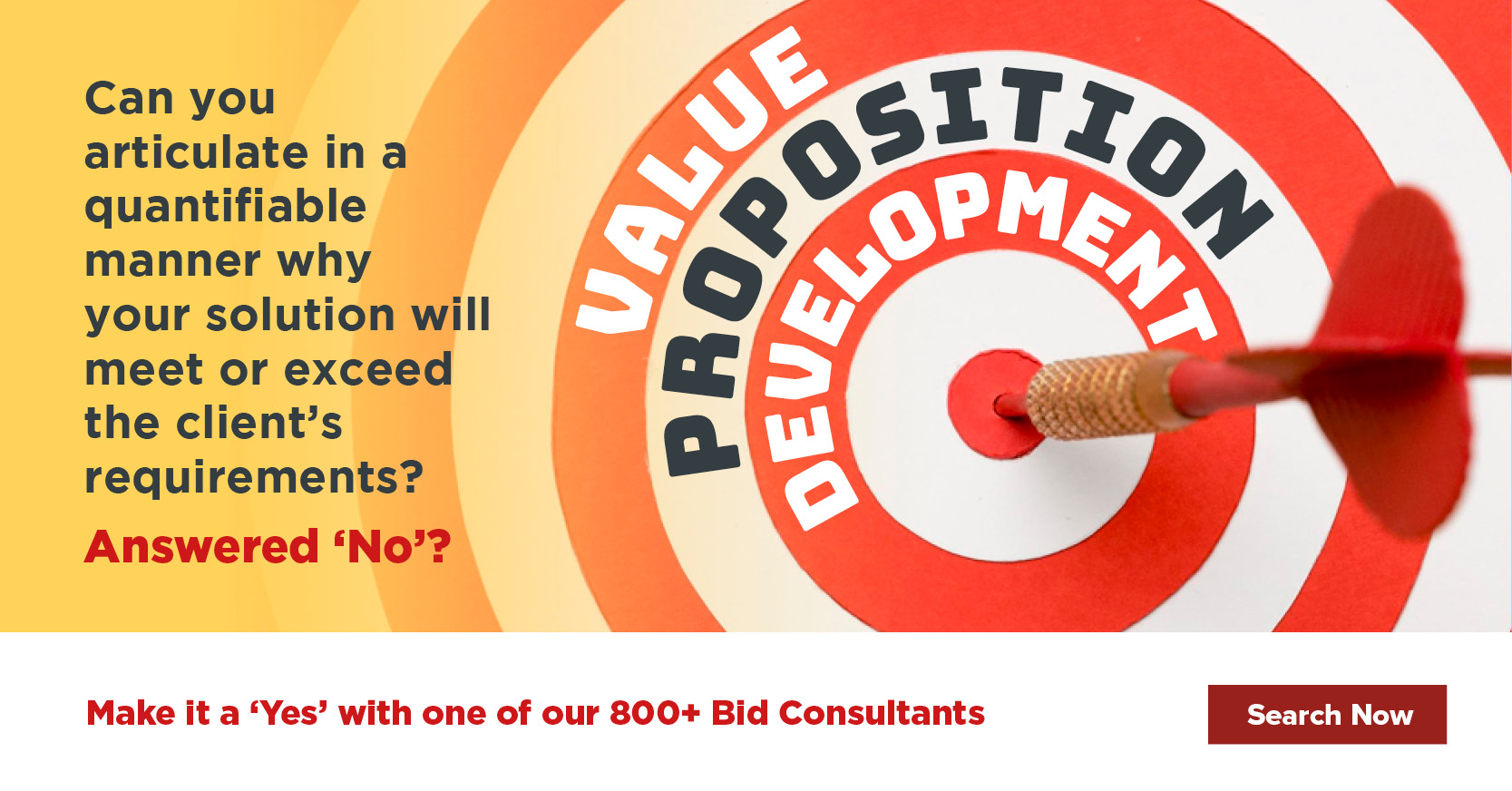
At times, developing value propositions can feel like getting blood out of a stone. The problem typically starts with all bid stakeholders having a different view of what a value proposition represents. A quick google of the phrase serves only to muddy the waters further. There is much talk of ‘a promise of value to be delivered’ or a ‘summary of how your product or service benefits your customers’.
APMP define it as ‘a statement in a proposal that specifically addresses how aspects of an offer positively affect the customer’s business. Value propositions should provide customer-specific statements that are quantified and describe tangible and intangible value.’
For us, the key word in this definition is ‘quantified’. It must be more than just a collection of features or benefits. If you talk about being innovative (don’t we all…), do you quantify it? If your focus is on sustainability, can you quantify it?
Your value proposition should drive your entire bid process and not be a last-minute insertion into your proposal. How pivotal is it in your bids?

Mention bid marketing and most people think of nice-looking graphics in a proposal document or anything that goes beyond a standard front cover with your client’s logo placed bottom right.
To be fair, we were probably in that category until we had the opportunity to work with Simon Wellstead (our go-to marketing guru). He transformed our thinking around what constitutes bid marketing, and how it should influence decision makers in the bid lifecycle.
If you advertise on a billboard, you only get 5 seconds for your design to make an impact on passing traffic. Simon taught us the importance of this concept not just on proposal design, but on all bidding communications you have with your target client. Are you able to render your value proposition in such a way that your buyer will understand it immediately and keep thinking about it long after they’ve seen it?
Put your last five submitted proposals on a table. Take the title off and what is the marketing message? Is there a story being told in the imagery or just a nice picture of your HQ, or worse still your product? If so, it might be time to re-think your Bid Marketing Strategy.

Developing a win strategy is no simple task. It relies on multiple sources of good data and information and on the ability of a team or individual to assimilate that information.
Win strategy is often confused with features and benefits. That generally omits one major stakeholder in the process – the client. Without detailed knowledge of your clients' issues, challenges or growth plans, you will be relying largely on hope. Issue 1 of Bidding Quarterly discussed win strategy and concluded emphatically that hope should never be a strategy.
It is often argued that price is not a win strategy. It certainly can be if you have taken account of all client issues, you’ve reviewed the competition, and you’ve conducted a SWOT analysis of your own position.
Next time you are presented with a win strategy, ask yourself does it really balance your client’s needs with your own business plan? Is a win strategy a key requirement of your bid process?
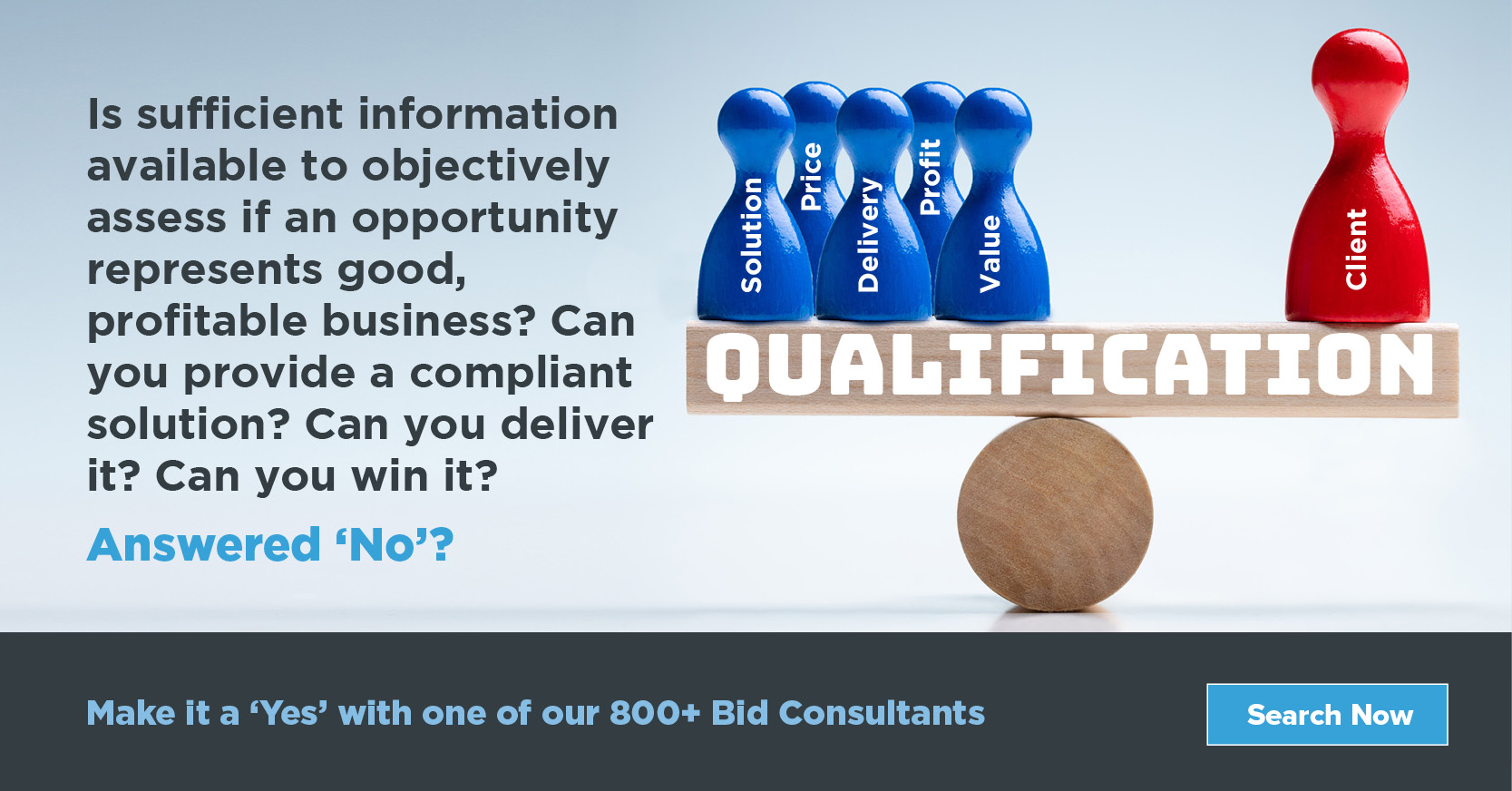
We know for many people in our profession, a qualification meeting can be the gateway to taking some degree of responsibility for an opportunity.
We generally argue that each stage of the Bid Lifecycle is equally important to winning business however, Qualification often has the most significant financial implications; getting it wrong can cost you £millions in bid costs.
One of the biggest challenges in qualification meetings is tempering the excitement of a new opportunity with the realities of winning it. All too often, qualification meetings are a fait accompli. The glittering prize on offer often blurs judgement, or worse the bid team are coerced (I’ve been there) in to working an opportunity because someone somewhere has decided it is ‘strategic’, without actually providing the back story.
Is Qualification a once only event or are you constantly re-evaluating your chances of winning throughout the life of the bid? Has pride ever prevented you from bowing out of a bid midway through the tendering process?

One thing we learnt very early on in our bidding careers was that ‘availability is not a skill’. Assembling a bid team often relies on calling in favours or begging, stealing and borrowing resource from other parts of the business. We all want to build the ‘A-Team’ for our bid because ours is the most important one, right?
And so, the bun fight begins. Internal politics can heavily influence your chances of securing the right resource for your deal, rather than your chances of winning.
Do you have a process for ringfencing bid resource as soon as the bid is qualified in, or just hope the right person accepts your bid kick-off meeting request? Are key contributors bought into the value proposition and actively shaping the deal, or are they just handed a list of questions that need a response? Do your job descriptions for supporting functions list ‘bid support’ as a key part of their job? Is availability of resource even considered a risk to your chances of winning, or are people just expected to pull an all-nighter?
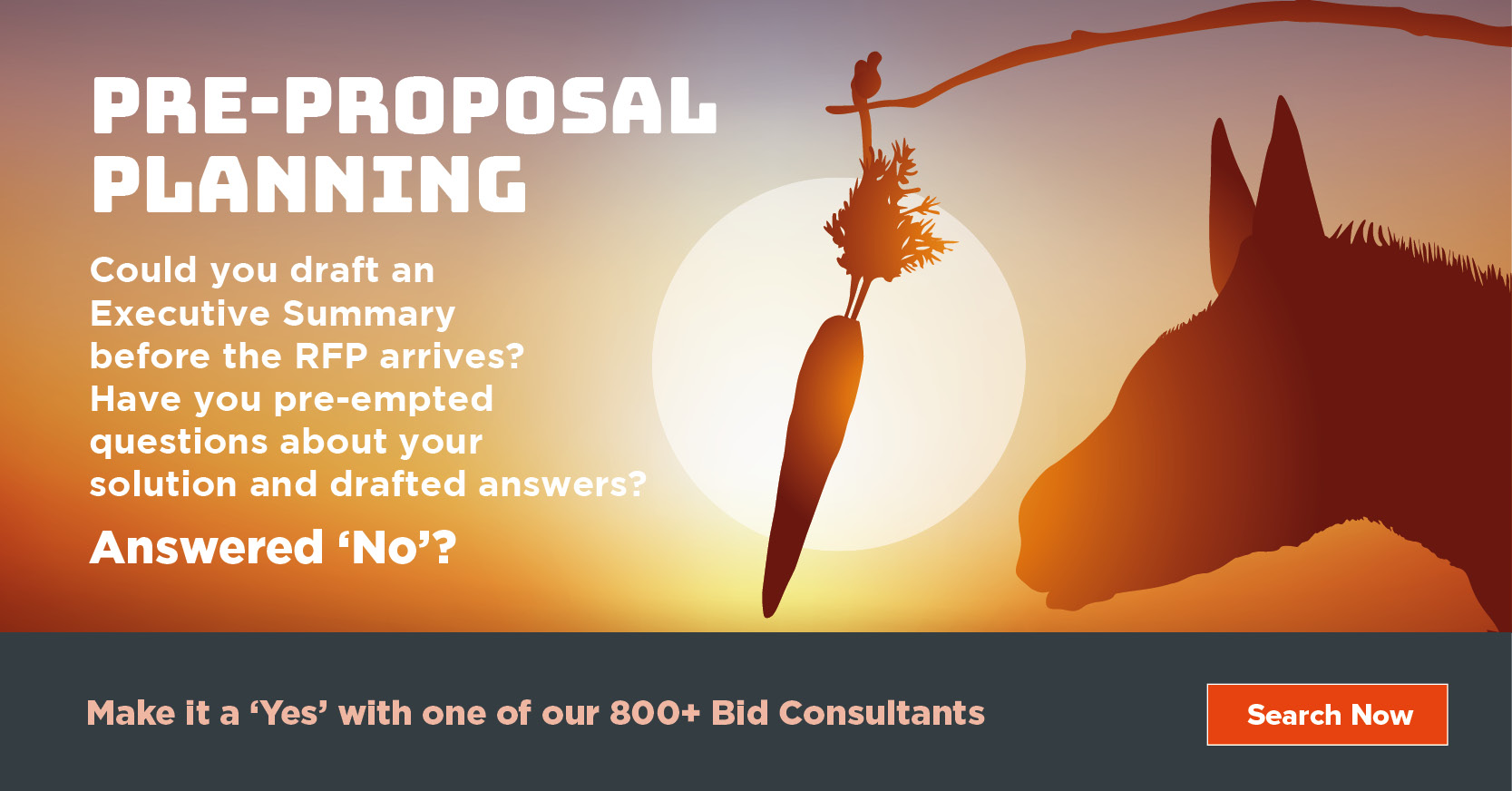
Many people in our profession love the buzz a deadline gives them. Stress, in the right form, is not necessarily always a bad thing.
So how then do we motivate our bid and sales teams to create some of the most important bid content and proposal responses ahead of receiving an RFI or RFP?
In his pre-proposal planning article in Bidding Quarterly 8, Jon Williams articulates it brilliantly … ‘I want to be confident that we have more momentum behind our proposal effort than anyone else in the race by the time the RFP lands. I’ll have fired up my team, making sure they’re motivated, hungry, excited’.
How do you get your Sales Lead fired up to draft an Executive Summary before an RFP arrives? Do you have a ‘Carrot’ or ‘Stick’ approach? Is pre-proposal planning a recognised step in your bid process?
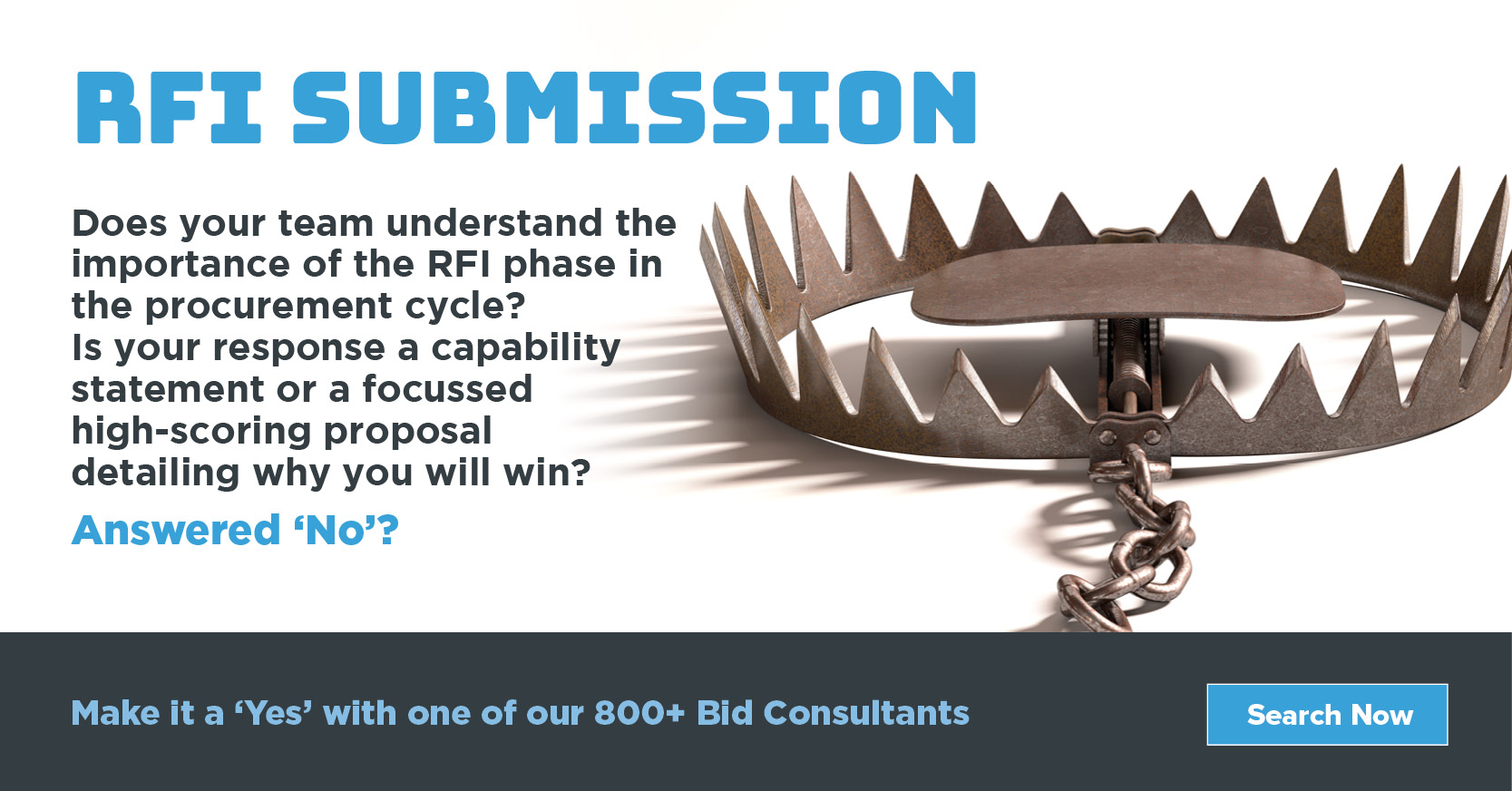
RFIs can be really annoying – there, we’ve said it. They are not the main event, yet they ask lots of detailed questions about corporate financials or obscure policies that you can never quite get the latest versions of. In the priority list, they tend to sit beneath live bids and, in our experience, are often completed and submitted by most junior person in the team.
Treating RFIs, PQQs or EOIs with a lack of respect is falling straight into procurement bear trap. Andy Haigh, our BQ Public Sector Expert, transformed our thinking on this phase of the Bid Lifecycle when he instilled the idea that procurement teams are looking for reasons to reject suppliers at this stage, rather than progress them. With limited resource, there are only so many suppliers they can take through the RFP process.
How do you manage this phase of the Bid Lifecycle? Do you have a dedicated RFI team? Do you fill them with standard marketing blurb or focussed responses? Do they follow the same stringent review and sign-off process as the RFP stage?

What’s the difference between a Bid Manager and a Proposal Manager? This is our no. 1 FAQ. Whilst there is no universal agreement (we discuss it in more detail here), we believe a Bid Manager should be focused on managing all the stages of the Bid Lifecycle (of which the proposal is one), including pre- and post-submission activities. The Proposal Manager is almost entirely focussed on the RFP / ITT submission.
But what about role ‘overlap’ at RFP stage? Who takes responsibility? In a large corporate that has a mature sales function, you may find all six of our core bid roles (see link in comments) overlapping, but with clearly defined interaction and responsibilities. In a SME, one person could be wearing six different bid hats depending on the day of the week.
Whatever your view, the challenge is to ensure all activities required to win are focussed on the finish line. Get the ‘balance’ wrong and you risk dropping out of the race.
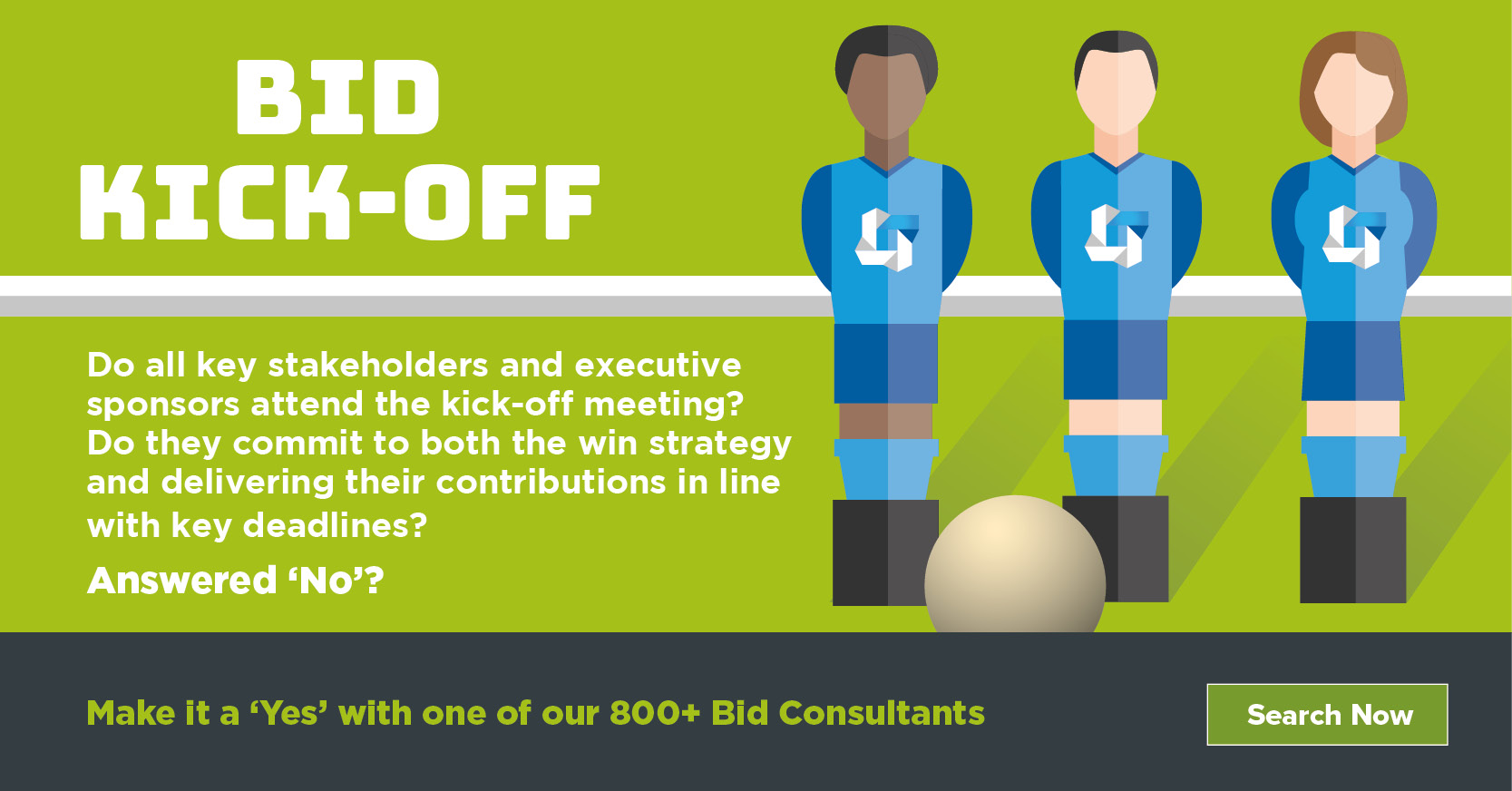
Our MDs first job out of university was as a Bid Manager for a large IT Reseller (very last century...). He had absolutely no idea what a Bid Manager did, but it was in London and it paid well, so of course he took it. He still remembers his first day vividly…
‘I was called into this meeting called a ‘kick-off’ and everybody sat quietly as we worked through every single question in the RFP and agreed who would answer it. This wasn’t such a tough job after all I thought. Of course, we lost. This process repeated itself several times before I realised there was much more to winning than just setting everyone on their way and ensuring every question had an answer’.
The bid kick-off is an important milestone in the bid process and much work needs to have gone before if you are to have a truly effective meeting. It is not by chance that we only get to bid kick-off at stage twelve of our bid lifecycle.
There should be no big surprises at this stage. If bid kick-off is still the first milestone in your bid process, you might want to reconsider going all in.

Learning the corporate jargon almost feels like a rite of passage in many of the organisations that we’ve worked in. You no longer feel like the new kid on the block when you can sit in a meeting and instantly decipher the TLAs going back and forth like a game of ping pong.
We all like to feel knowledgeable, and strangely the Three Letter Acronym seems to give us a level of confidence that we know what we are talking about.
Just how TLA-heavy are the solutions you propose? Are they written in a complex way that excites your internal team who ‘get’ this stuff, or are they articulated in plain English, in a way that is easy to score whoever the reader? Do you always use a readability checker such as Microsoft Word’s “Flesch Reading Ease” score?
Organisations who come a close second typically provide a great solution, they just don’t communicate in the client’s dialect.

We’ve talked lots about understanding our clients’ needs and having the right team in place to win business as part of the Bid Lifecycle challenge, but we’d be fooling ourselves if we believed price and value weren’t equally as important.
Over the years we’ve witnessed far too many deals lacking a commercial bid strategy. This typically leads to pricing in silos, excessive margin layering and accounting for risk in different ways. The end result is a bid full of assumptions and caveats to reduce the final price, or worse, one that’s taken a last-minute scythe to the solution.
As bid professionals, is commercial strategy part of your remit, or is it just something you leave space in the proposal for the finance and sales team to complete? Is your team skilled in Pricing-to-Win or other pricing methodologies? With APMP planning to launch a micro certification in this discipline, are you looking to expand your skillset?
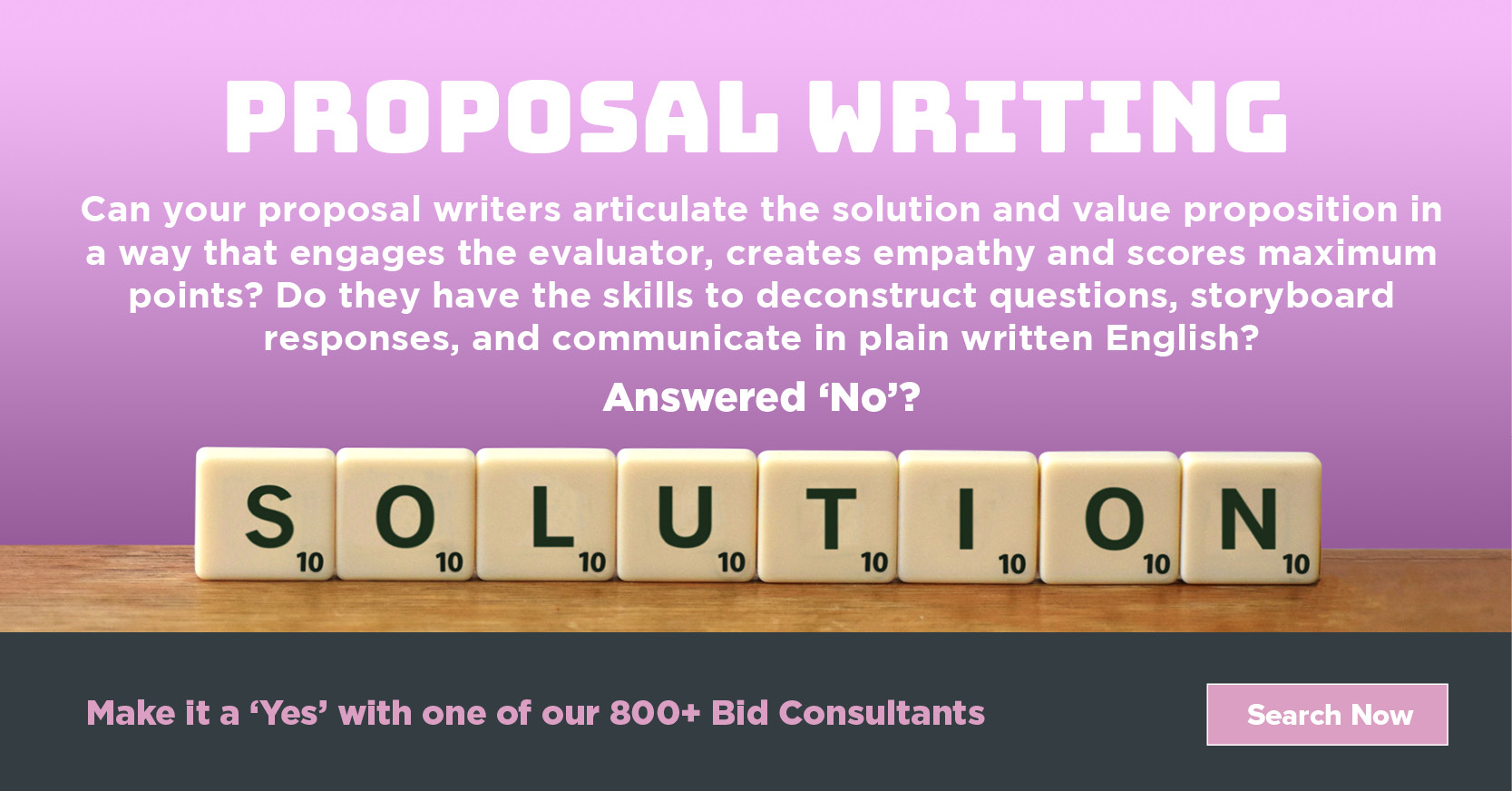
What makes a great proposal writer? Who makes a great proposal writer? We think most in our profession consider themselves competent, if not professional writers.
Do a quick search on bid training courses and over 90% of the results focus on bid and proposal writing. There are some fantastic courses available, so we have no excuse for submitting poorly written proposals.
But when a client asks me ‘how good’ our writers are, we struggle to answer. Not because we don’t recognise good writing or understand how a proposal should be structured, but more because writing is so subjective and there is no definitive measure of 'good'. Many writers are more akin to editors – they critique well but often struggle when presented with a blank piece of paper. It’s such an oddity that no universal proposal writing qualification exists in our profession. Thankfully, there are Creative Writing, Journalistic, and English Language qualifications, and these all provide the required skills for writing bids.
So, the next time you ask your Sales lead or SME to crack on with writing the executive summary or solution, ask yourself if they have the right skills or perhaps instead, are feeling somewhat intimidated by the task.

One of the first questions we always get asked when benchmarking a bid or proposal function is ‘what proposal automation and content management software do you recommend?’
Whilst we could offer an instant response, we try to back track the conversation and understand why an automated solution or content library is so high on their priority list. At the core of most answers is a drive for efficiency – they are under pressure to produce more proposals, faster, and with fewer people.
When we ask about the additional resource they will be employing to manage the content and library, we get a look of confusion – we want more with less, not more with more? And that is where we find most organisations who implement company-wide proposal libraries go wrong. Libraries can drive massive efficiencies if implemented right, but never underestimate the time needed to maintain content quality – to ensure it is owned, managed, relevant, and proposal ready. Fail in that and you end up with GIGO. Kathryn Potter, our BQ Content Expert, discussed this in her article ‘A stitch in time saves nine’ in BQ6.
At last count, we had over 30 proposal content solutions on our list. Personally, we like Qorus Software but whichever you choose, invest in content before the software.

It’s still a standing joke in our office. Our MD sent a communication to nearly 8,000 people and the second word was misspelt. It was supposed to start with ‘I’m excited….’. Instead, everyone received ‘I’m exited….’. How the hell can that happen?
He had read it twenty times, but his brain read over the error because he was too familiar with the content. Microsoft Word was happy because it was neither a typo nor grammatically incorrect. It still haunts him to this day, but it forced him to seek out the services of a professional proofreader and we now work with the brilliant Lisa Readman
But what did we learn from it? Firstly, it is difficult, if not impossible to review your own work. Secondly, when asking people to review a document, you must give them clear instruction on exactly what it is you want them to check – is it style, grammar, spelling, content, or readability? If you follow Shipley’s Colour Team Reviews, do reviewers understand what the different colours mean?
Peter McPartland wrote a thought-provoking article in BQ5 on reviewing documents and the importance of providing structured feedback – definitely worth a read if you are keen to learn more about this often-neglected aspect of proposal management.
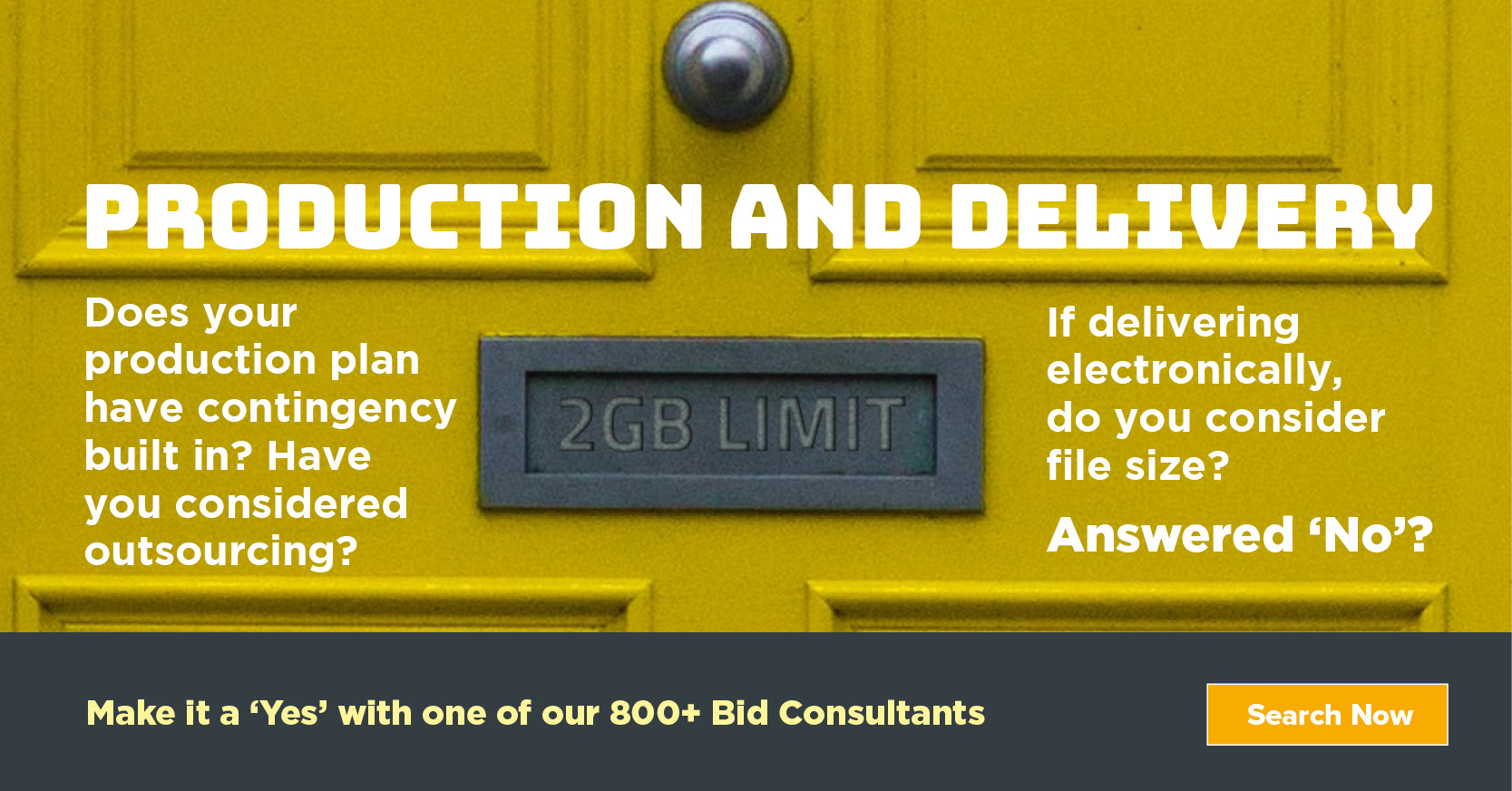
If it’s going to go wrong, this is often the stage when it can hurt you most. The deadline is almost upon you and there is very little wiggle room left. We swear printers and their uncanny knack for breaking down at critical times have taken years off our lives. Whilst outsourcing is a great option, it’s always a leap of faith trusting that everything will come back quality checked and collated just as you want it.
Thankfully, most submissions are now electronic, but that doesn’t make them any more straightforward. Having to ditch important graphics because you’re only given text fields or reducing image quality to meet submission guidelines can massively affect the impact you were hoping to make. Similarly, spending hours removing the extra spacing at paragraph ends to ensure your submission is within character count limits can be painful.
Don’t always assume couriers will deliver to the right location – we learnt that the hard way. Producing a ‘final, final’ version and managing the tinkering that inevitably goes on can be a change control nightmare. Do you do a dry run submission to fully understand the portal’s limitations? How do you ensure contingency is built into this phase of the Bid Lifecycle?
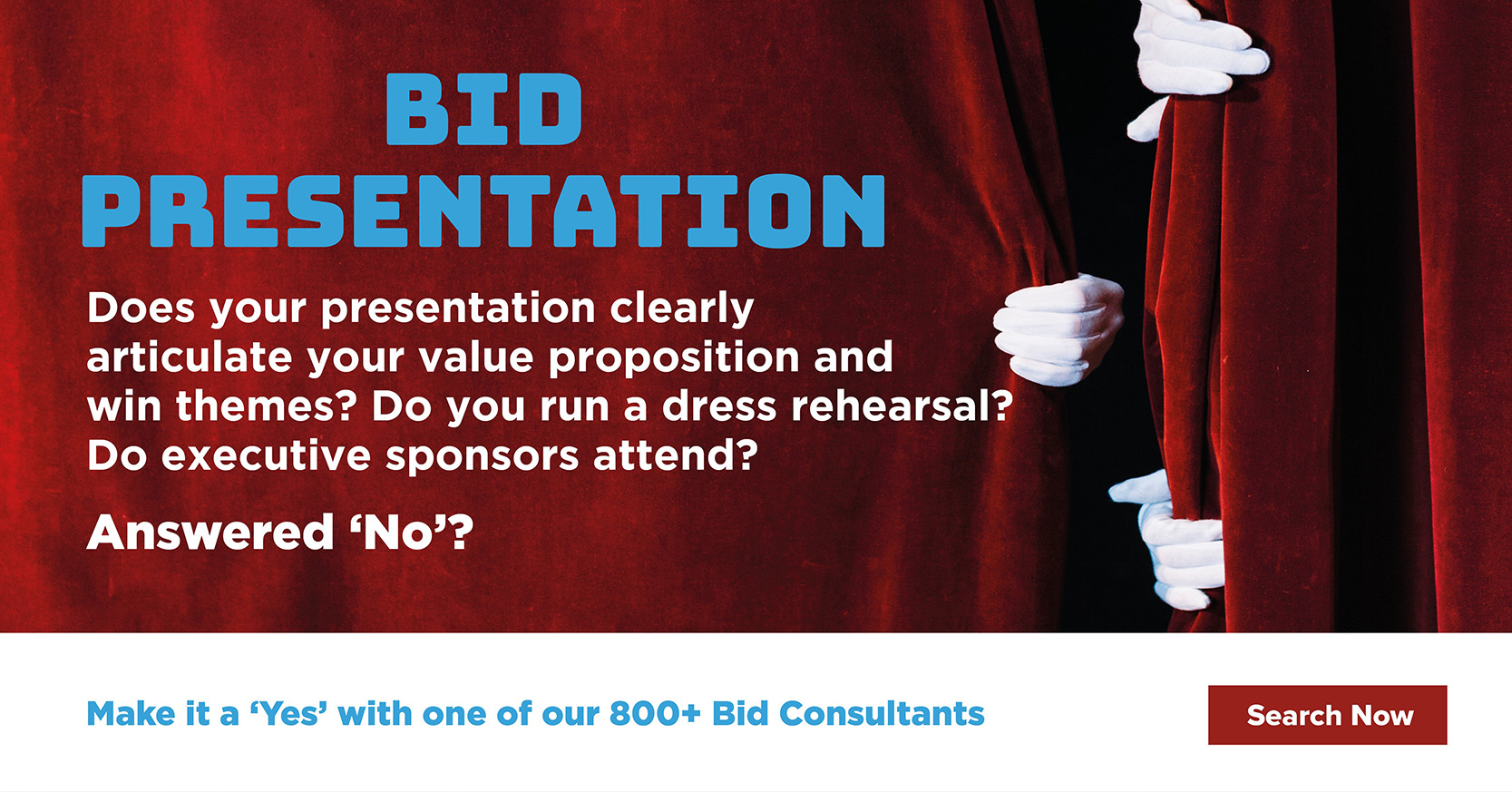
You’ve made it to bid presentation stage – this is it, your last real chance to influence the client and close the deal. Your ‘A-team’ was working on the presentation material whilst producing the RFP response, so they dovetail beautifully. You’ve rehearsed several times and you have got the CEO to attend, or at least commit to recording a personalised video that cements their commitment. Does that sound familiar?
Or is it a last-minute panic, where your grab the slide deck from your last pitch and top and tail it? Do you coordinate roles in the client’s car park and hope for the best? I’m amazed how many companies still use their corporate standard pitch deck at presentation stage and assume adding a slide or two about the client and solution will get them over the line in first place. Much like the RFI Submission stage, this is another potential bear trap. Do you even get involved in bid presentations? One litmus test I use when differentiating between Bid and Proposal Managers is how involved they are in this phase of the bid lifecycle.

Just how much more detail do they want? You’ve diligently completed a RFI, you’ve slogged it out for weeks on the RFP, you pulled out all the stops for the presentation, and yet they just keep asking more and more questions.
It’s so easy to become complacent at this stage of the deal. Whether it’s simply bidders fatigue or just assuming the scoring is done and dusted and you don’t need support from the bid team, it can prove disastrous.
Andrew Haigh does this subject more justice than we ever could in his article in Bidding Quarterly 2.

We all love to do a deal. Feeling we have got more for our money or negotiating someone down on price to make something affordable can be very uplifting.
However, haggling over the price of a second-hand car does not necessarily put us into the ‘skilled negotiator’ category.
Sarah Hinchliffe wrote a brilliant article in Bidding Quarterly 9 where she applied the negotiating skills of a leading hostage negotiator to the world of bids and proposals. One particular line sticks in our mind: Empathy is the absolute basis of trust, and trust is the absolute basis of persuasion.
When entering your negotiations, do your clients trust you? Do they even know you? Have you demonstrated that you are ‘actively listening’?
Is negotiation training on your radar as bid professionals? When it comes to submitting your BAFO, do you assign people with the right skills to negotiate with the client? How do you avoid a ‘race to the bottom’ in your attempts to secure the deal? Are you easily able to model different scenarios that allow to flex your solution, assumptions and dependencies, or is it a complex reinvention of the wheel that requires you to start the deal approval process all over again?

Why do we put ourselves through it? No sooner has one bid been submitted before we are on to the next. What keeps motivating us to start over, reenergise, and go again? A common trait we find in all successful bid and proposal professionals is their passion for winning. They thrive on succeeding against the toughest opposition - seeing their collective team effort come out on top.
Yet very few people in our profession have pay and rations directly linked to their bid success. In those organisations that have highly evolved strategic bid functions, they get closest to this model, but as a profession we are often driven by metrics that don't necessarily increase our financial reward. We know many people are measured on improving quality (and rightly so), but we are firm believers that there are no winners on a losing team. So how do you get a proposal team motivated to ‘go again’ if the win rate is invariably low?
If you win, do you have a detailed bid handover plan and process for engaging delivery / implementation? Do you formally recognise the team’s achievement? How do you celebrate when everyone is working from home? Are you personally rewarded? If you lose, does a blame game ensue that slowly erodes your passion for winning?

Learning reviews can be one of the most cost-effective ways of improving your win rate, yet they tend to have a very high rate of ‘no-shows’. We understand that you won because you ‘did everything right’, so why analyse it? And of course, if you lost, it was most likely on price and people are too busy trying to win the next one to commit time to a post-mortem that will have no immediate benefit for them.
And that’s why many learning reviews falter before they even get underway. They should not be about winning or losing – they should be focussed on what you can do differently; do better; more efficiently; more effectively; with improved quality and focus next time. Hence, in our opinion learning reviews need to be carried out very soon after the bid is submitted. We understand the reluctance to run learning reviews before the client has awarded the business (and hence why it sits after Award in our cycle), but it can make for a much more honest, productive, and blame free session.
Do you run learning reviews on everything you touch, or just the large strategic deals? As a bid professional, do you take responsibility for feeding back the learnings to the key stakeholders in the business? Are learning reviews regularly changing how you qualify deals, or do you take your client's word that you were a 'close second' and hope for better next time?
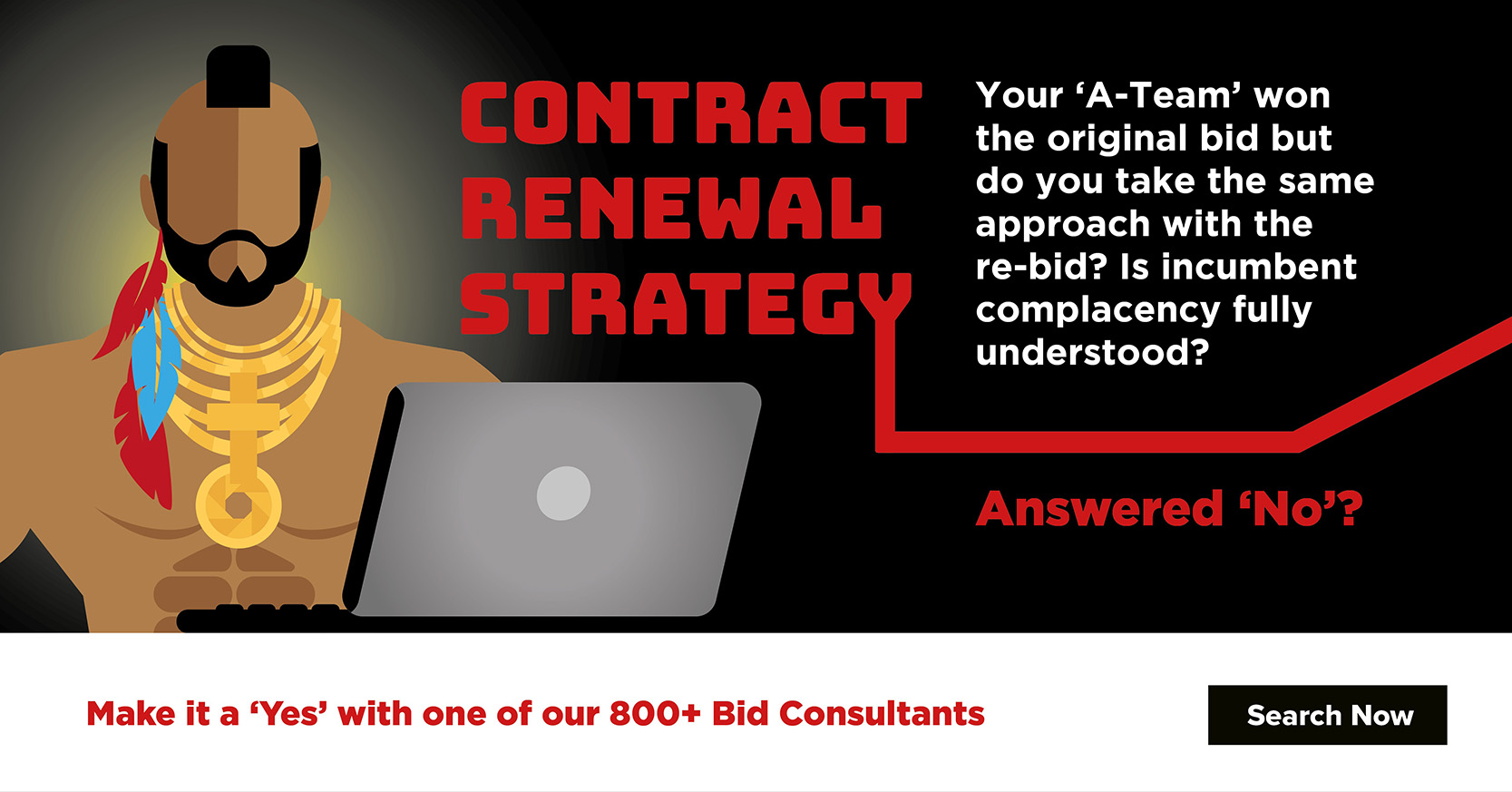
It’s widely accepted that people are more likely to buy from people they like and trust. Indeed, we preached about the importance of trust in our negotiation stage.
However, we firmly believe when it comes to renewals, and the process of qualifying them, too much ‘value’ can be put on the relationships that have been developed, with the ‘substance’ of the offer becoming somewhat secondary. In short, you take your eye off the ball but justify this complacency by regularly have lunch with someone on the procurement team. Good luck with that.
Graham Ablett wrote a brilliant article in BQ8 discussing the importance of developing proactive renewal strategies. He talks about the ‘pyramid of renewal doom’ and how bid and proposal teams can help coach their sales teams through the renewal process. With many buyers more than halfway through their purchasing cycle when they issue a RFP, there are many opportunities as the incumbent to influence your customer before they go to market.
How do you manage renewals? Does your bid process full take account of them? Do they get the same level of attention as new business?


Thank you!
Bidding Quarterly - Hard Copy Subscription
Error: Contact form not found.
